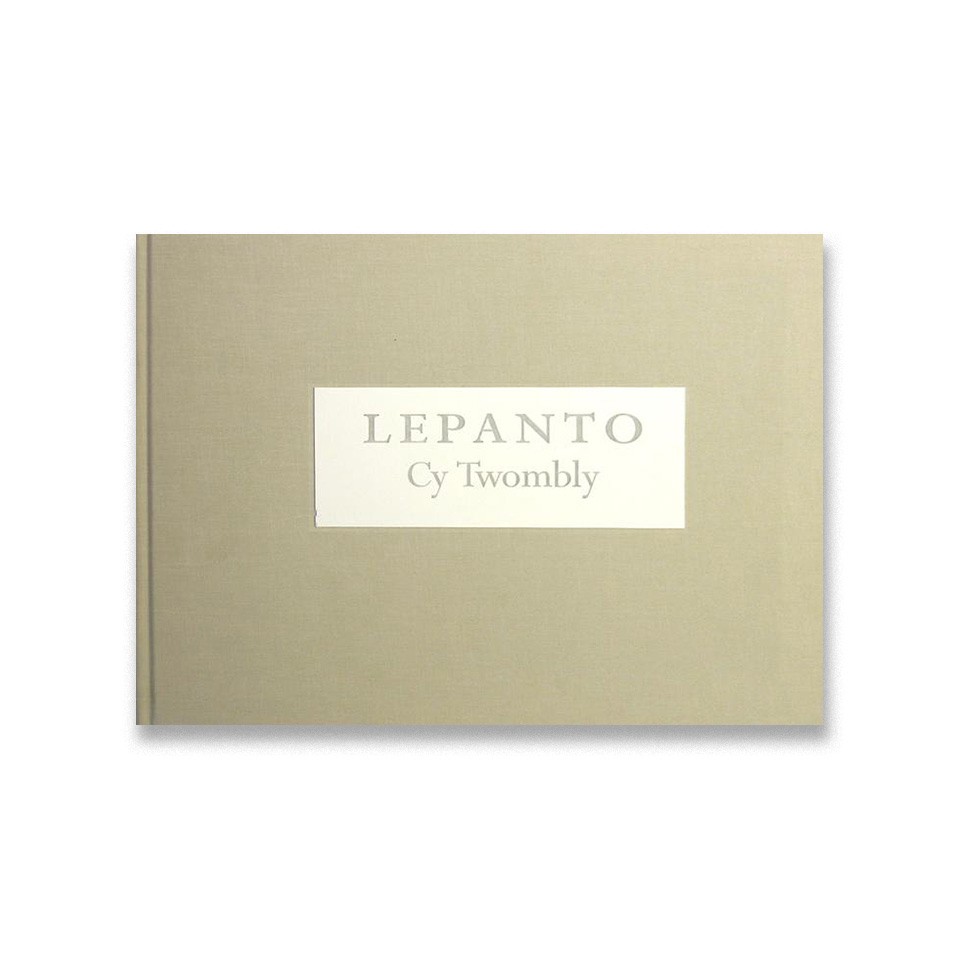

Two versions of this catalogue exist: the first was published on the occasion of Twombly’s exhibition of Lepanto (2001) at the 2001 Venice Biennale, at which he was awarded the Golden Lion. The second exhibition catalogue accompanied an eponymous exhibition at Gagosian Gallery in 2002. Both include a text by Richard Howard entitled “On Lepanto” and color plates with reproductions of each panel of the cycle; the latter also includes Kirk Varnedoe’s “Cy Twombly’s Lepanto.”
Howard proclaims that “in the battle of Lepanto, where Cervantes lost an eye, Twombly recovered a vision” (39). He frames Twombly’s practice as invoking “Mediterranean pathos” (39) and draws comparison to jazz scores. He offers referents for Twombly’s ship motif, including Egyptian funerary barges and D.H. Lawrence’s “The Ship of Death,” and discusses the history of the battle of Lepanto. He argues of the cycle that “a certain human prowess and brutality is registered here (though no human form is shown), amid the paradoxically opposed elements of fire and water” (45). He describes the painting as imparting the “tombstone effect” while nevertheless maintaining “sheer exuberance” (45). For Howard, “we are still, with Twombly, in 2001, in the thick of the fight” (47).
Howard then situates Lepanto relative to the painting of battles, and specifically naval battles, throughout western art history, placing particular emphasis on antecedents such as Peter Paul Rubens and William Blake, and discusses specifically what he terms the the “panoramic impulse” (51). Turning to Sigmund Freud to elucidate the relationship between battle and sexuality, he implores his viewer to “witness the thrilling conflagration of every fourth panel, on fire with passionate bursts of red and gold (burning ships or sexual discharges, now I ask you…)” (51). He frames Lepanto not as “coming” (or the Victorian “spending”) but rather as “simply (simply!) being” (53). After offering detailed formal analyses of each panel in turn, Howard grapples with how to characterize the narrative content—or lack thereof—presented in the cycle. Invoking Twombly’s friend and interlocutor Roland Barthes, Howard concludes that “Twombly’s works of the last 20 years are probably the most intimate and the least personal art of our moment” (63) and that, regarding Lepanto in particular, what Twombly ultimately offers is “an innocent eye confront[ing] battle, whereof both the losing and the winning convey the doom of human experience” (65).
For details about Varnedoe’s essay, see the description of the Museo del Prado catalogue Lepanto: Cy Twombly.
Scholars researching Twombly’s Lepanto cycle should consult this volume alongside the Museo del Prado exhibition catalogue, Lepanto: Cy Twombly, which includes an essay by Alejandro Vergara and the same essay by Kirk Varnedoe.
(Publication description by Jamie Danis)
First published on the occasion of the exhibition Cy Twombly. Lepanto at the Italian Pavilion, XLIX Biennale di Venezia (June 10 – November 4, 2001).
The second exhibition catalogue accompanied the exhibition Cy Twombly. Lepanto at Gagosian Gallery, New York (January 19 – February 26, 2002).
Cy Twombly. Lepanto. Essays by Richard Howard. Published by Gagosian Gallery, 2001. 65 pages. Fully illustrated. English edition.
Cy Twombly. Lepanto. Essays by Richard Howard, Kirk Varnedoe. Published by Gagosian Gallery, 2002. 64 pages. Fully illustrated. English edition.